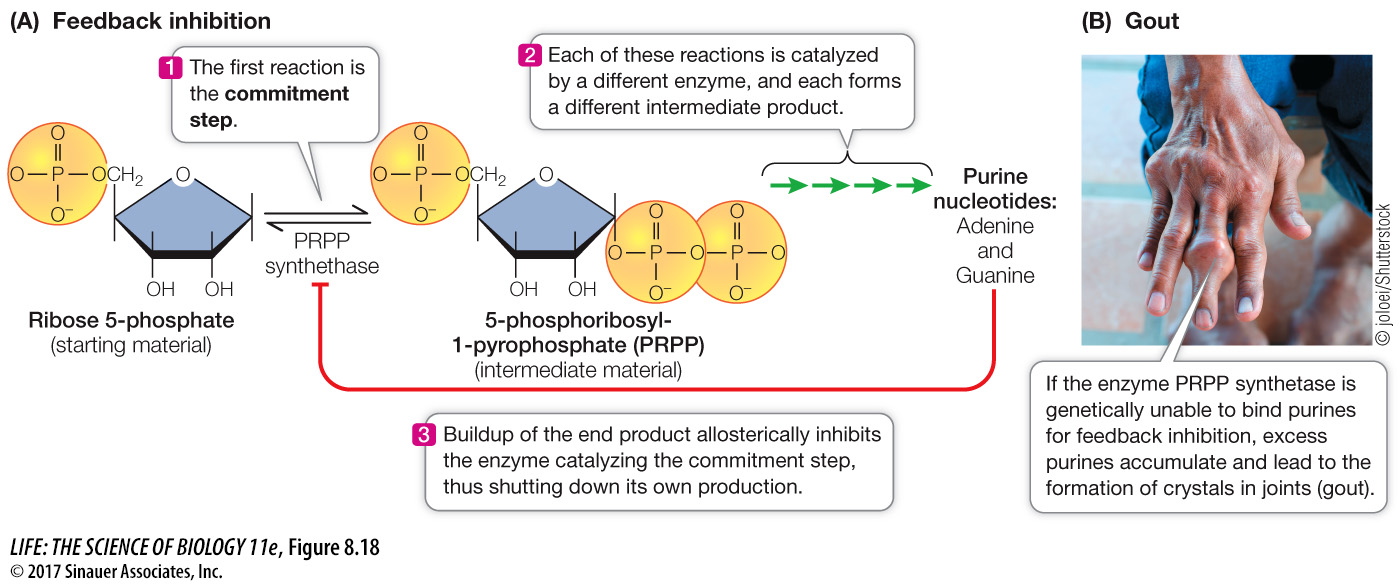Allosteric effects regulate many metabolic pathways
Metabolic pathways typically involve a starting material, various intermediate products, and an end product that is used for some purpose by the cell. In each pathway there are a number of reactions, each forming an intermediate product and each catalyzed by a different *enzyme. The first step in a pathway is called the commitment step, meaning that once this enzyme-
*connect the concepts The number of molecules of a particular enzyme present in a cell at a given time is controlled in large part by the synthesis of that protein. See Key Concept 16.1 for a discussion of the regulation of protein synthesis.
One way to avoid this problem is to shut down the metabolic pathway by having the final product inhibit the enzyme that catalyzes the commitment step (Figure 8.18). Often this inhibition occurs allosterically. When the end product is present at a high concentration, some of it binds to an allosteric site on the commitment step enzyme, thereby causing it to become inactive. Thus the final product acts as a noncompetitive inhibitor (described earlier in this section) of the first enzyme in the pathway. This mechanism is known as feedback inhibition or end-
